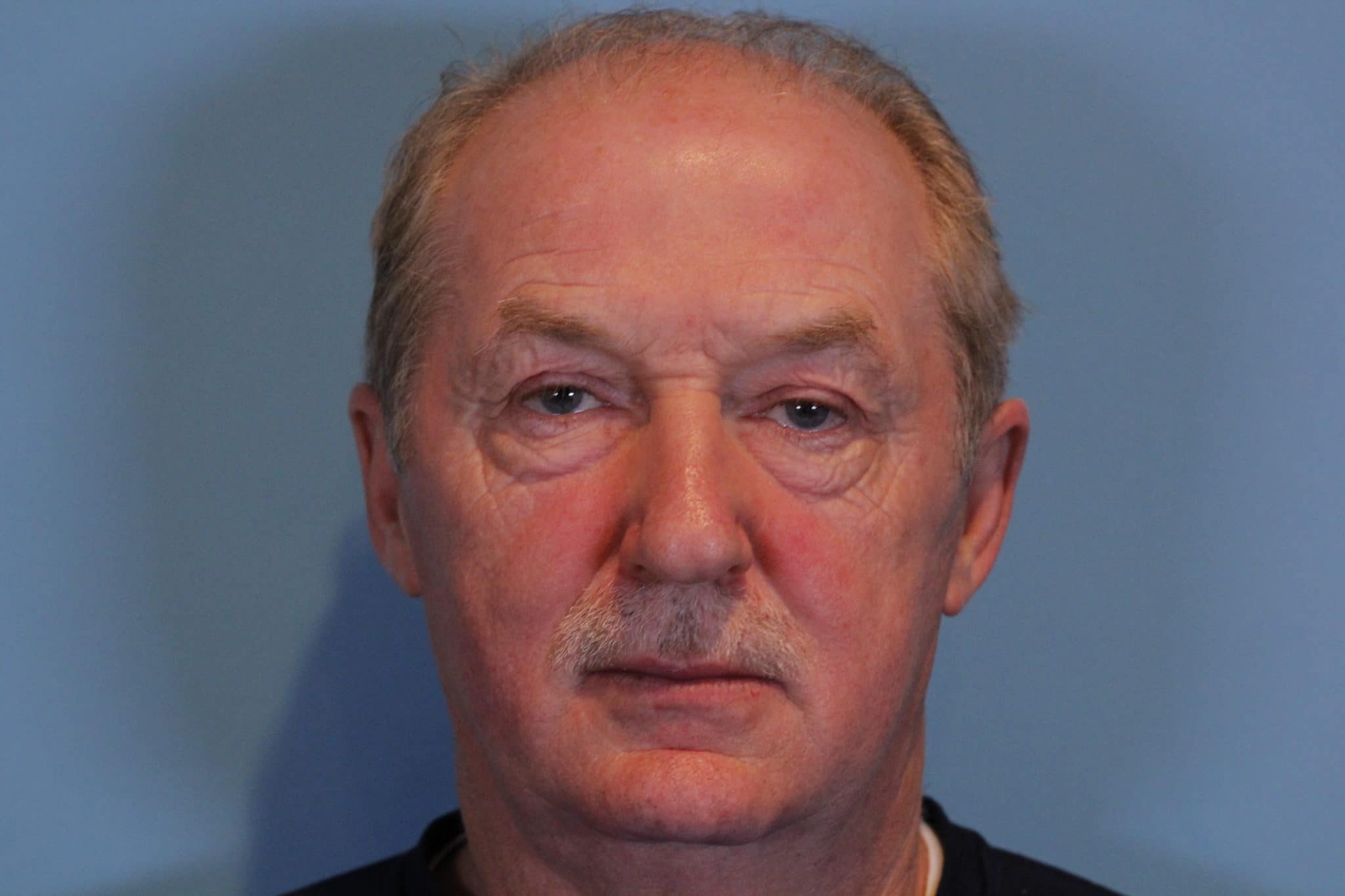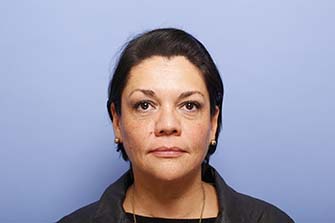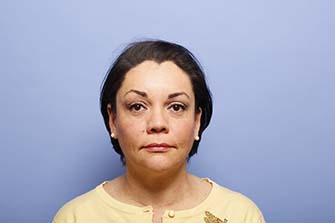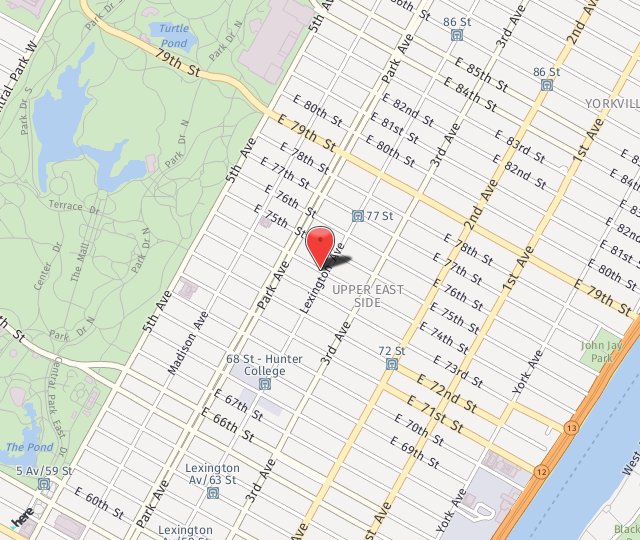Thomas Romo III, MD, FACS is one of the most experienced and respected plastic surgeons for blepharoplasty (eyelid surgery) in the world, known for his meticulous minimally invasive surgical techniques and for achieving natural-looking results with a shorter recovery period. As a world-renowned innovator in surgical methods as well as an inventor of new endoscopic instruments for facial surgery, Dr. Romo’s practice draws patients from New York City, across the United States, and internationally for all of their surgical and non-surgical facial cosmetic needs.
What Exactly Is A Blepharoplasty?
Blepharoplasty is the technical term for eyelid surgery, which may be done on either the upper or lower eyelids or both at the same time. The skin of the eyelid is much thinner than that in other parts of the face which often makes this the first facial area to show signs of aging.
As the eyelids age, the supporting soft tissue and skin weaken, causing the upper eyelid creases to diminish and fat pads to appear on the lower lids. Because of this, vision may be impaired, making daily activities difficult. Eyelid surgery is also popular to help create a more youthful and rejuvenated look for Asian patients.
WHAT ARE THE DIFFERENT TYPES OF EYELID SURGERY?
Upper Blepharoplasty
Upper blepharoplasty is a technique that is commonly used to open up the eyes by removing the excess loose skin from the upper lids.
Lower Blepharoplasty
There are two basic approaches to the lower lid blepharoplasty procedure. The appropriate technique will be determined by both Dr. Romo and the patient.
- The external approach, also called a skin-muscle approach, removes skin and fat pads
- The more conservative internal approach, called a transconjunctival blepharoplasty, removes the fat pads only
How do I determine which blepharoplasty procedure is right for me?
During your consultation with Dr. Romo, you’ll discuss the issues you have with your aging eyes. What would you like to see changed? At that point, Dr. Romo will examine your eyelids and the surrounding skin. He’ll focus on the amount of sagging skin and possible fat accumulations. He’ll discuss what he’s seeing with you and encourage you to ask any questions.
At that point, he will tell you whether he believes upper or lower blepharoplasty would be all that is needed to address your condition. More often, patients opt to have both eyelids addressed with this surgery, but that depends on the patient.
What Results Can An Eyelid Lift Achieve?
Blepharoplasty may be used to:
- Remove excess skin or fat from the eyelids
- Fix sagging eyelids
- Correct puffiness and bags under the eyes
- Create a refreshed and firmer-looking eye area
- Lift the eyelid to achieve better vision
- Help remove shadowing under the eyes
- Make your eyes look bigger and brighter
- Help make your face look younger and more open
- Create a natural-looking crease in Asian eyelids
Are the results of eyelid surgery permanent?
The changes made by Dr. Romo with eyelid surgery are permanent. Yes, your eyelids will continue to age and sag to some degree. But the fat and extra skin removed is gone for good. Most patients feel their faces look about 10 years younger after blepharoplasty. You will continue to age, but from a decade younger starting point. Patients generally are satisfied with this procedure for years, even decades after having it.
Will eyelid surgery fix my declining peripheral vision?
Eyelid surgery can return full peripheral vision IF it has been declining due simply to sagging eyelid skin beginning to enter your field of vision. As you would assume, this surgery does not in any way address your actual eyesight. Eye conditions such as glaucoma can begin to impact your peripheral vision as the optic nerve is damaged. This surgery won’t do anything to improve that vision loss.
A nice side benefit of improving your peripheral vision by reducing sagging skin is that in these cases blepharoplasty may be deemed “medically necessary” by your insurance provider. If that is the case, the procedure is not considered elective and will often be covered by your health insurance.

Who Are The Ideal Candidates For Eyelid Surgery?
Eyelid surgery may be recommended for patients of both genders facing one or more of the following aesthetic or functional concerns:
- Excess skin above or below the eyes
- Eyelids that hang so low that it’s affecting your vision
- A half-moon shaped line beneath your eyes
- Puffy eyes that make you look tired
- Skin around your eyes that makes you look older than you are
Candidates for eyelid surgery should be in good overall health without any serious eye conditions. People with eye disease such as glaucoma, retinal detachment or thyroid disorders are not good candidates for blepharoplasty. People suffering from diabetes, cardiovascular disease or high blood pressure are also not good candidates for this procedure.
HOW TO PREPARE FOR YOUR BLEPHAROPLASTY PROCEDURE?
We discuss the results that patients can expect from blepharoplasty during their consultation. At this time, we also obtain a detailed health history to confirm optimal wellness before surgery. Lab tests may be ordered for more in-depth health information.
Before surgery, patients are asked to avoid tobacco consumption. Alcohol intake should also be limited in the days before surgery. Certain medications, including supplements and drugs that can increase bleeding, will need to be avoided, as well.
How Is Eyelid Surgery Performed?
Blepharoplasty is typically performed as an outpatient procedure. The procedure requires local anesthesia and sedation, however, general anesthesia can be used for anxious patients. Based on the treatment plan and specific needs of the patient, Dr. Romo will surgically correct either the upper or lower eyelids, starting by removing any excess skin.
All incisions will be made along the natural crease lines so any scarring will be virtually invisible. Most eyelid surgeries for Asian eyelids create a crease in the eyelids where there is none; this surgery is done for both eyes.
An upper or lower blepharoplasty can take 1‒2 hours (when performed as a single procedure), depending on the complexity. When performed in conjunction with other procedures the surgery time may vary, however, this allows you to only have one recovery period rather than two.
WHAT IS RECOVERY LIKE AFTER BLEPHAROPLASTY?
Blepharoplasty recovery typically occurs over a two-week period. After 7 to 10 days, patients may look and feel well enough to return to work. Remnant bruising and swelling can easily be disguised with makeup. Our team provides clear post-operative care instructions that facilitate a smooth and stress-free recovery after blepharoplasty. We are also available to answer questions that arise during this time.
- You may have some swelling and bruising after the procedure
- The day after the procedure, cold eye gels can be applied to help reduce swelling
- After surgery, the eyes may temporarily feel sticky, dry or itchy
- Depending on the type of stitches used, sutures may be removed in 3‒5 days or stitches will dissolve on their own
- Eye drops and sterile ointments may be recommended to help keep the eye area clean
Is eyelid surgery recovery painful?

Since this surgery is performed on the eyelids, it’s easy to assume the recovery would be quite painful, but that’s not the case at all. Obviously, you’ll feel nothing during the procedure. Recovery from eyelid surgery is not difficult for our patients. Dr. Romo will prescribe pain medication, but most people feel over-the-counter medication is sufficient. After a week your stitches come out and your recovery is pretty much over. You will have some residual swelling, but the pain will have passed.
When can I return to normal activities after having eyelid surgery?
A great side benefit of eyelid surgery is that your recovery is not difficult. Swelling and bruising is the worst on the day after surgery but begins to quickly run its course. Light activity such as walking helps to speed healing, and you can do this after just a day or two. Dr. Romo will remove your stitches in one week. Most people can return to normal activity in a week or so after surgery. For more strenuous exercise, it’s probably about a two-week time frame. At that point, the majority of your bruising and swelling will have resolved.
What Procedures Can Be Combined with A Blepharoplasty?
While blepharoplasty is sometimes performed as a single procedure, when performed on its own, the surgery may make other problematic facial areas even more pronounced. A blepharoplasty procedure will not alter fine lines or wrinkles around the eyes nor can it change sagging eyebrows. Depending on a patient’s needs and desired results, Dr. Romo may also recommend an eyebrow lift or facelift in conjunction with eyelid surgery to achieve the best and most natural-looking results.
Will I need eyelid surgery again in the future?
These are generally considered to be single surgeries, as you can’t continue to remove more sagging eyelid skin without the risks of leaving the person with an unnatural-looking result. We all have sagging in our eyelid skin as we age. After this surgery, your future sagging will start from a much younger place, so your eyes will always look younger than those who did not have blepharoplasty.
Does A Blepharoplasty Leave Scars?
Surgical incisions will develop scar tissue as a natural healing response. Understanding this, Dr. Romo places incisions in the most discreet positions, such as the natural crease of the upper eyelid or the lash line of the lower eyelid.
WHAT ARE THE RISKS OR SIDE EFFECTS ASSOCIATED WITH EYELID SURGERY?
Blepharoplasty is one of the most popular cosmetic surgeries every year around the globe because it delivers great results, and the risks are very low. Still, there are the usual risks with any surgery: excessive bleeding, poor wound healing, reaction to anesthesia, and the like.
Specific to this surgery, risks involve injury to the eye muscles, difficulty closing your eyelids, and potential dry eye. These are all very rare; this is an effective, safe procedure. The double board-certified training, expertise, and experience of Dr. Romo further decreases any potential risks with these procedures.
Choosing the Right Eyelid Surgeon
Your comfort level with your surgeon is one of the most important aspects of having a good surgical experience. Before consulting with a surgeon, it is critical to observe their education, training, and certifications. Particular experience with eyelid surgery is also an important detail. Dr. Romo is double board-certified (American Board of Otolaryngology — Head and Neck Surgery and the American Board of Facial Plastic and Reconstructive Surgery).
FAQs
What Is a Good Age for Blepharoplasty?
The best age for blepharoplasty largely depends on individual circumstances and reasons.
Many of our patients begin to consider the procedure in their mid-30s to early 40s – when signs of aging around the eyes become more pronounced. However, if droopy or baggy eyelids run in your family, you might opt to go through surgery earlier.
The American Society of Plastic Surgeons has also noted an increase in people undergoing blepharoplasty at younger ages.
When Can I Wear Makeup After Eyelid Surgery?
Typically, patients can start wearing makeup approximately two weeks post-surgery. This period allows the incisions to heal and reduces the risk of infection. During follow-up visits, Dr. Romo will clear you to resume using cosmetics based on your recovery progress.
How Long Does the Surgery Take?
The exact duration of your blepharoplasty depends, in part, on whether you're having just the upper or lower eyelids corrected or both. However, most procedures take between 1 and 3 hours. Dr. Romo will give you a more precise timeline after your consultation.
Will Blepharoplasty Affect My Ability to Wear Contact Lenses?
Blepharoplasty patients are typically advised to avoid wearing contact lenses for about two weeks following the surgery. This precaution helps prevent irritation during the healing process. It also ensures that your results are not compromised.
Dr. Romo will offer guidance on when it's safe to resume wearing contacts based on the specifics of your surgical outcome and recovery.
Are There Any Lifestyle Restrictions During Recovery?
Certain lifestyle modifications are necessary to ensure a smooth and swift recovery. For at least two weeks, you should avoid strenuous activities such as:
- Heavy lifting
- Vigorous exercise
- Anything that could strain your eyes or increase blood pressure
We also recommend stopping smoking and alcohol consumption. These can hinder the healing process. Additionally, it’s essential to protect the eyes from direct sunlight and wind by wearing sunglasses when outdoors.
How Should I Sleep After the Procedure?
Proper sleep positioning is vital after your eyelid surgery. To reduce swelling, sleep with your head elevated above your chest for a few weeks. Use a few pillows to prop yourself up or rest in a recliner at a 30 to 45-degree angle. Avoid lying on your side or stomach, as increased pressure on the eyes can affect the healing process.
How Do I Maintain the Results of Blepharoplasty?
To maintain the youthful and rejuvenated appearance achieved by your eyelid lift, adopt a comprehensive skincare routine. You should also protect your skin from prolonged sun exposure by wearing sunscreen, a hat, and sunglasses when outdoors. You may opt for periodic non-surgical treatments, such as fillers, as well. They will enhance and prolong the effects of the blepharoplasty procedure.
Meet Our Top-Rated Blepharoplasty Surgeon
Dr. Thomas Romo III, MD, FACS, is certified by the American Board of Otolaryngology-Head and Neck Surgery and the American Board of Facial Plastic and Reconstructive Surgery. He’s considered one of the best blepharoplasty surgeons in New York and the world.
With a medical career that spans over 25 years, Dr. Romo concentrates solely on enhancing and restoring the face, nose, eyelids, brow, and neck. His profound commitment and expertise have established him as a leading figure in the field of facial aesthetics.
SCHEDULE YOUR BLEPHAROPLASTY CONSULTATION IN NYC!
If you are interested in learning more about blepharoplasty and other procedures Dr. Romo offers, call our office today at 212-288-1500. You can also schedule a consultation with Dr. Romo by filling out our appointment request form. You deserve to look and feel your best, so don’t hesitate to contact us today!





